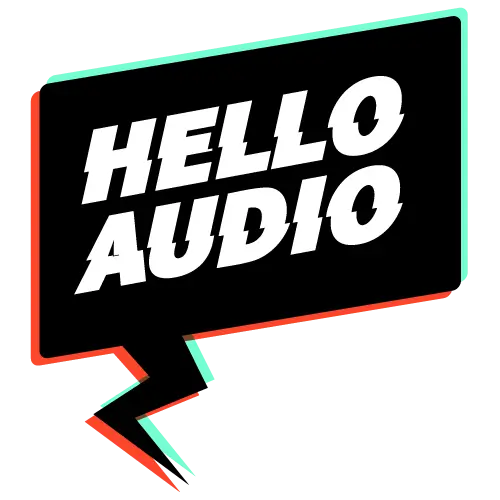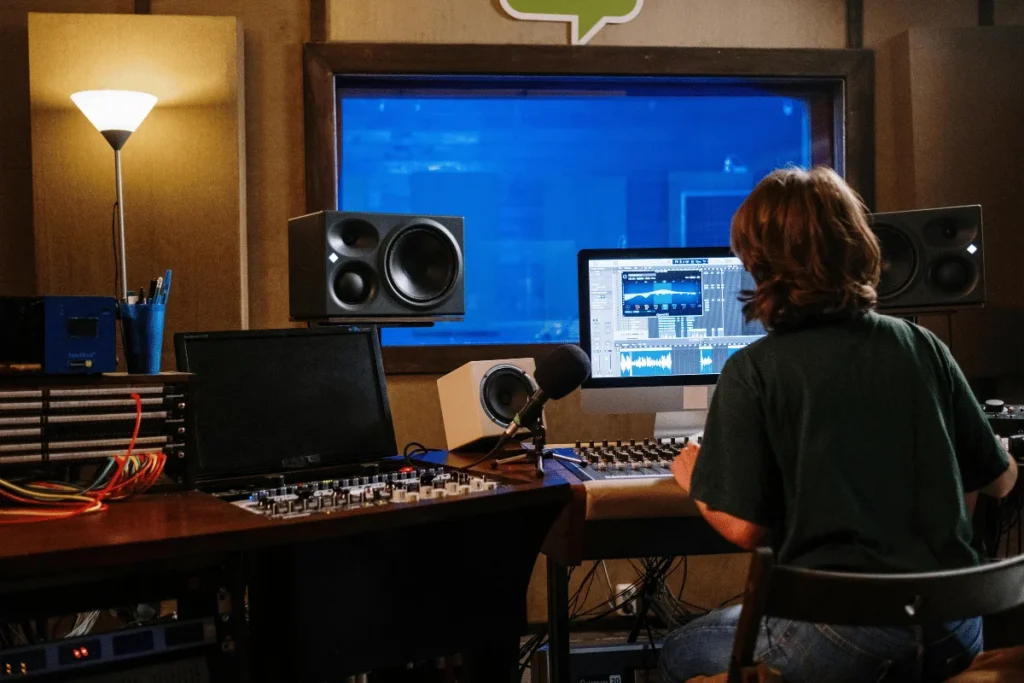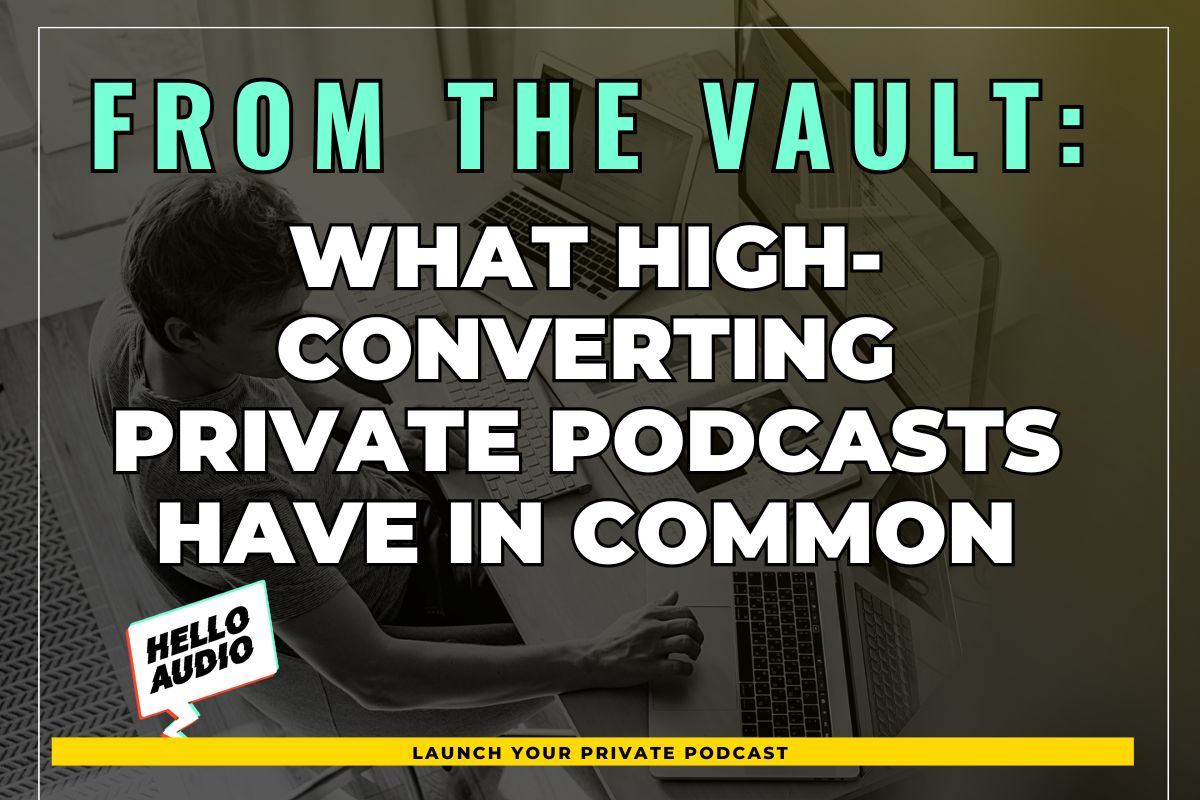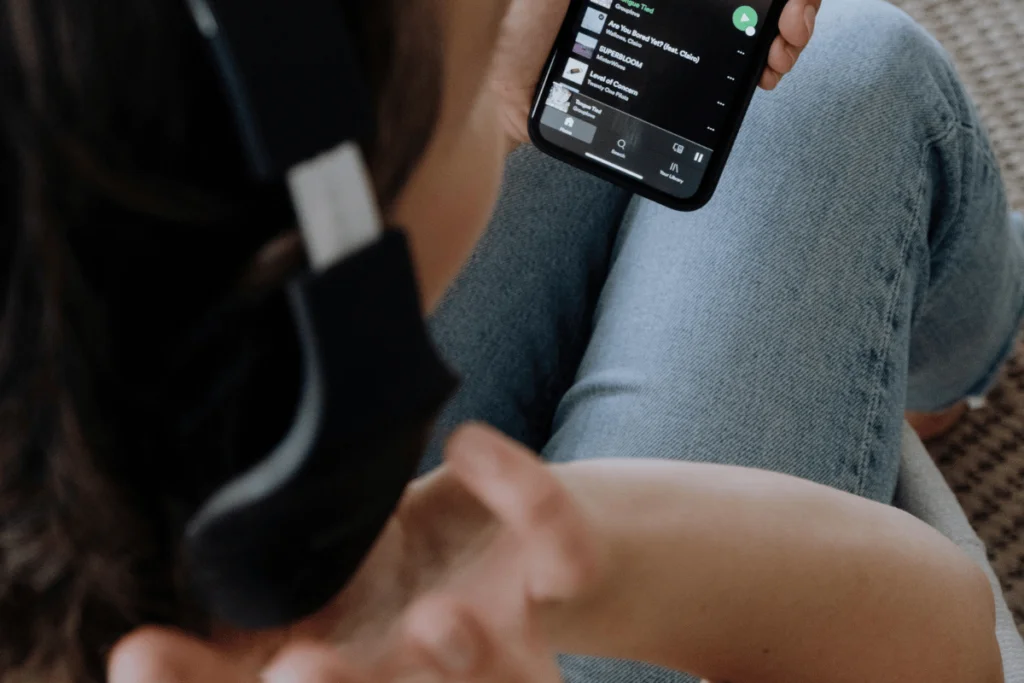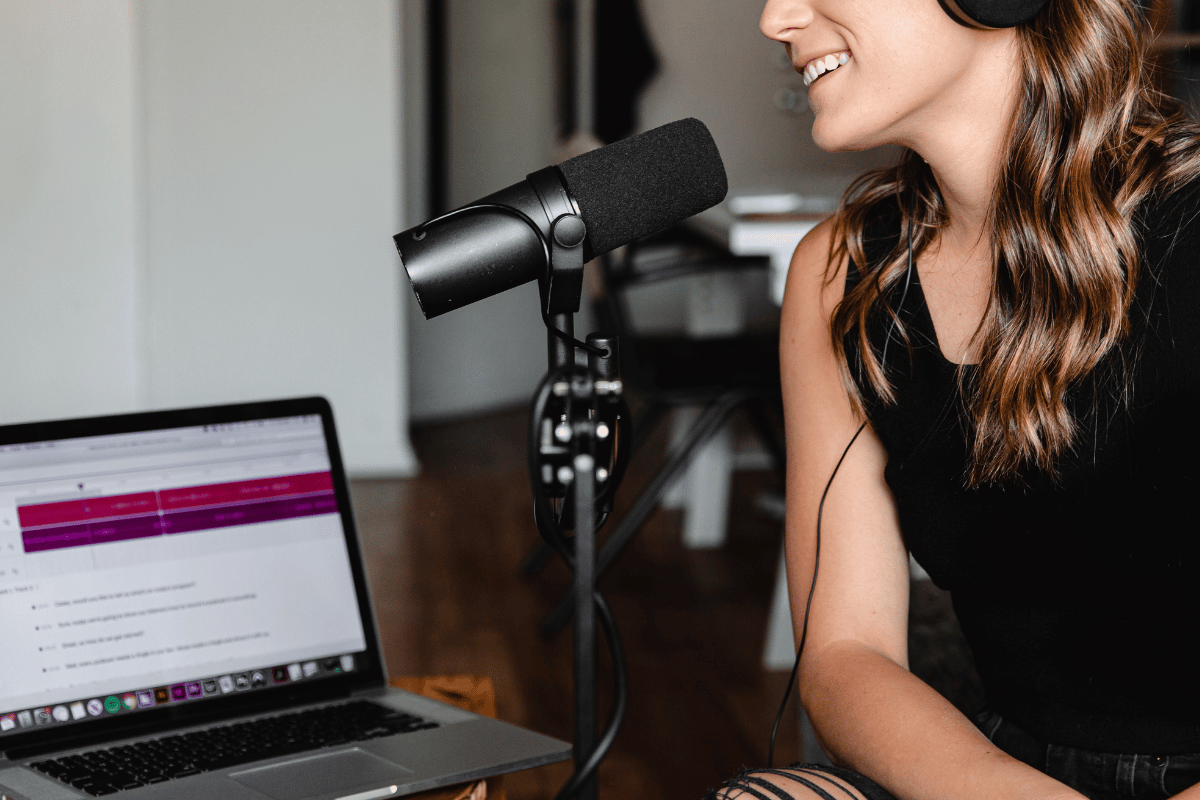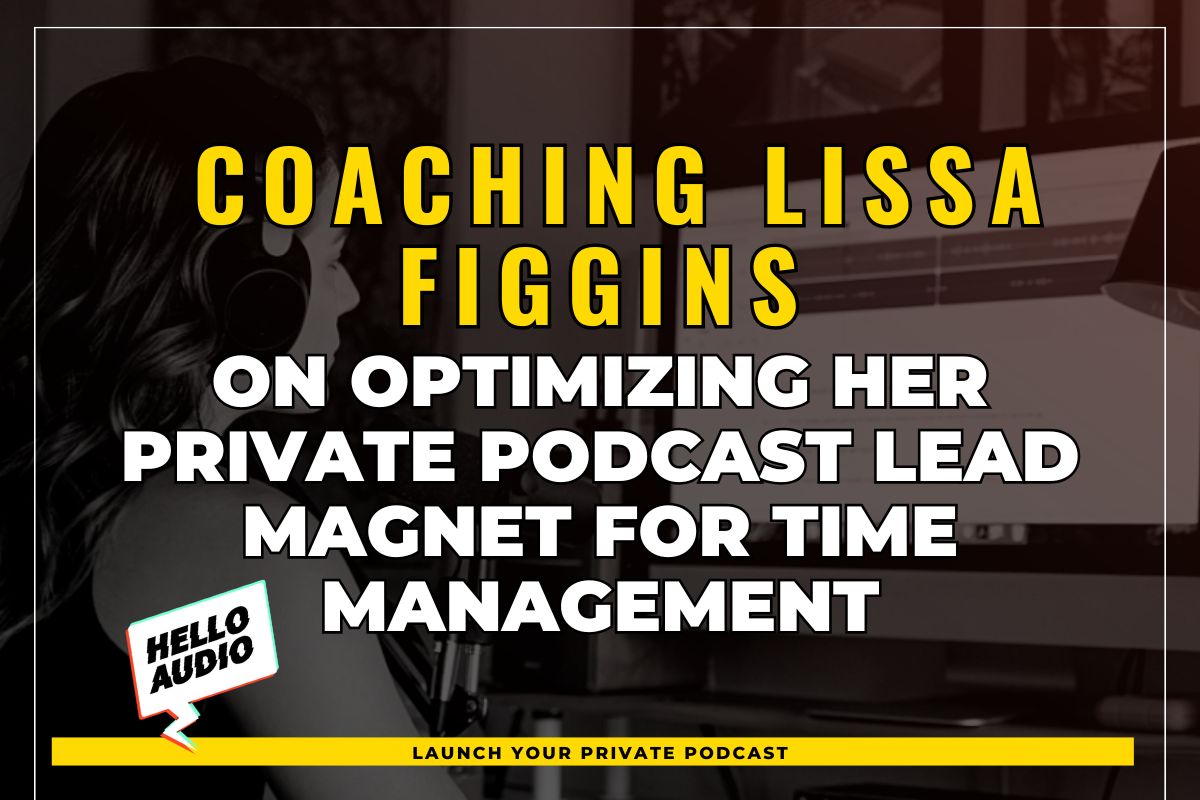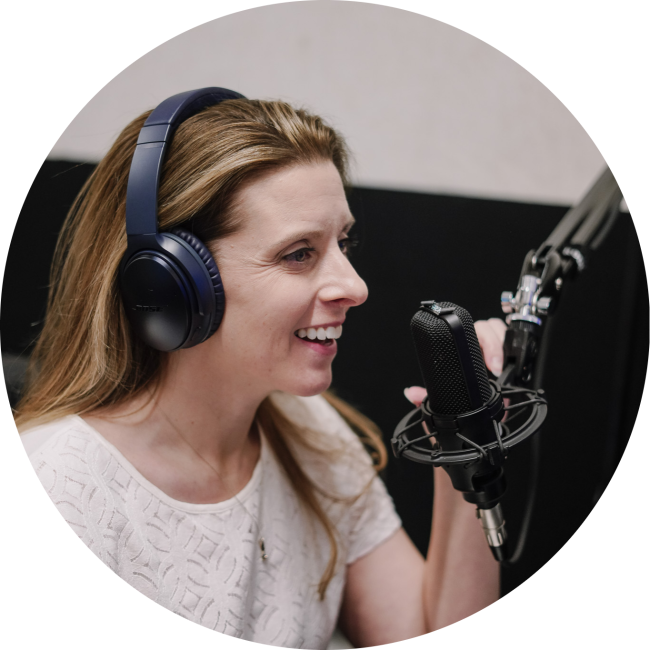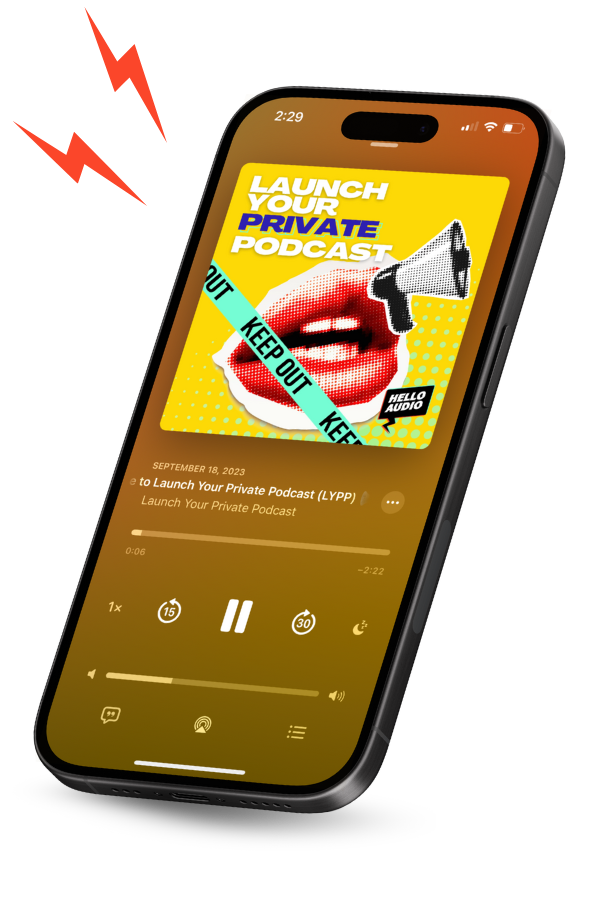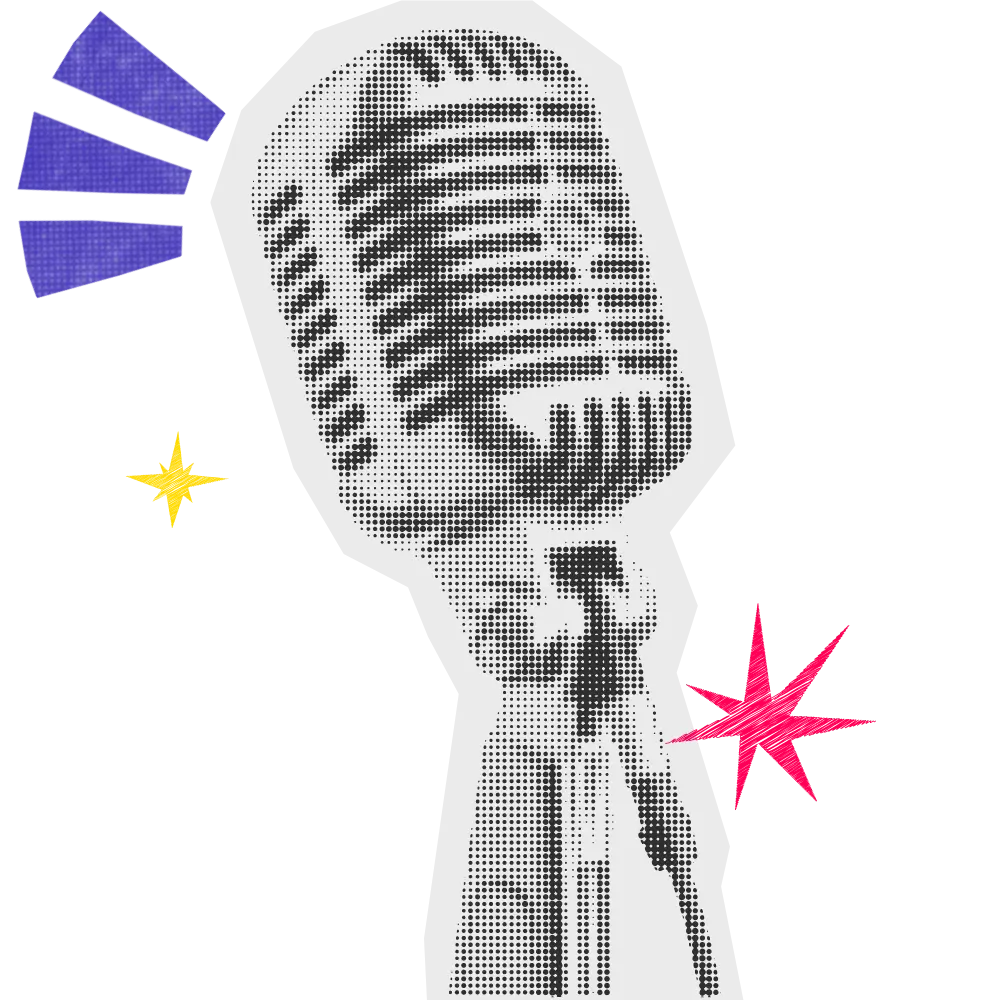There might be one tune or jingle that has stayed with you for a long time, and you can easily recognize the brand behind it. That’s the power audio has on your mind!
Unlike traditional ads that fight for visual attention, audio marketing can seamlessly become a part of people’s daily lives. Today, approximately 584 million people listen to podcasts, 700 million people use streaming platforms, and 20% of the population uses voice assistants. Thus, you have a unique opportunity to engage and connect with your audiences personally and effectively.
Through this blog, you’ll find what audio marketing is and its benefits, challenges, and strategies.
If you want to harness the power of audio marketing for your brand, Hello Audio makes it easy. We help you repurpose your existing content into podcasts and optimize and distribute them to captivate your audience. Make your content accessible to your audience anytime, anywhere.
Sign up and gain seamless audio solutions today!
What Is Audio Marketing?
As the term suggests, “audio marketing” is a form of marketing that utilizes audio or voice as a source to reach a wider audience. You can promote your business, products, or services through audio.
It can be anything, like private podcasts, audiobooks, and sound snippets that you can spread across multiple media platforms. It’s a powerful medium that can help create a more personalized and engaging connection with your target audience.
Audio marketing is especially effective as listeners often become highly engaged, making it a valuable channel for building awareness, generating leads, and driving sales.
In fact, in 2025, worldwide podcast ad spending is estimated to reach $4.46 billion.

Benefits of Audio Marketing
With audio marketing, you can build personal connections with listeners, and it’s also very cost-effective compared to traditional marketing.
Let’s look at more unique advantages audio marketing has to offer:
1. Wide Reach and Engaged Audience
Audio marketing taps into highly engaged audiences on platforms where they consume podcasts and music.
Audio content doesn’t demand an audience’s full attention like visual content. It can seamlessly fit into daily routines like traveling, working out, or relaxing. This gives audio marketing the edge: you can connect with your audiences no matter where they are.
2. Personalized Connection with Listeners
When you hear a human voice, you feel the emotion, warmth, and authenticity that only text or visual often misses.
Whether it’s a conversational podcast, a trusted host reading an ad, or a voice assistant responding to queries, audio marketing creates a more personal, one-on-one experience.
3. Interactive and Immersive Storytelling
With audio, you can create an unforgettable experience for the listeners. Sound effects, music, and voice modulation bring storytelling to life, making it immersive and memorable.
With interactive features like voice-activated ads or personalized content suggestions, brands can make the engagement more long-lasting.
4. Cost-Effective Marketing Solution
You don’t have to pay as much as you might for a video or TV ad. Audio marketing delivers significant results with a minimum budget.
Producing a podcast, running ads on Spotify, or optimizing for voice search is relatively budget-friendly while offering strong engagement. Even small businesses can leverage audio content to compete with larger brands.
5. Earworm Effect
Audio can stick with listeners—think catchy jingles or a familiar podcast voice. A great ad or podcast episode lingers in the listener’s mind, influencing their decisions over time.
This deep-rooted effect makes audio marketing a robust long-term strategy.
6. Creative Flexibility
Audio gives you tons of creative freedom. Want to go funny? Do an interview? Maybe something quirky or emotional? Go for it.
From quick, snappy ads to deep-dive branded podcasts, there’s a format for every message—and you can tailor it exactly to your vibe and audience.
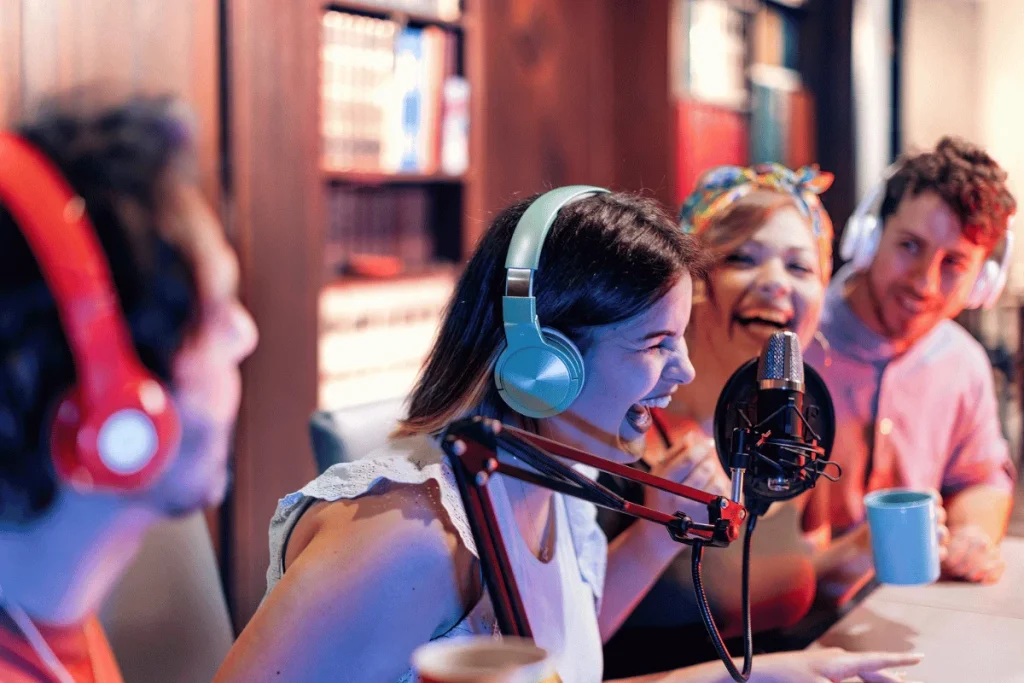
Key Strategies for Effective Audio Marketing
You can experience all the benefits mentioned above if you have a clear strategy for implementing audio marketing.
Here’s a list of the strategies you can use:
Repurpose Existing Content into Audio
Reading a blog or watching a video requires an audience’s undivided attention. But when you convert it into audio, they can easily listen to the content while commuting, exercising, or working. Repurposing content into audio allows brands to reach a greater audience and provide content in a more accessible format.
Additionally, publishing these audio versions on your website, social media, or podcast platforms extends the lifespan of your written content while catering to different consumer preferences.
Now that you know how to make the most of a single piece of content, allow Hello Audio to help you in the process. Repurpose your existing content into private podcasts within minutes on our platform and experience an increase in engagement.
Watch this instant demo video to learn how!
Launch Your Own Branded Podcast Series
With branded podcasts, you can establish your authority, build trust, and connect with listeners on a deeper level. Traditional ads can only promote your product for a certain period, but podcasts allow you to engage the audience for an extended period with valuable insights rather than just direct promotion.
You can develop a theme around your brand values and audience interests. Then, interview experts and publish behind-the-scenes brand stories or educational content.
Sponsor Podcasts or Participate as Guest Speaker
If you don’t want to commit to recording and publishing a full podcast series, then you can sponsor existing podcasts or appear as a guest speaker. If you approach a podcast that already has dedicated listeners who trust the host, your work becomes easier to gain credibility for your product or service.
Remember to choose a podcast that aligns with your industry and target audience. Sponsoring can get you pre-roll or mid-roll ad placements, and as a guest speaker, you can focus on providing insights rather than making a hard sell.

Utilize Voice Technology for Content Delivery
Smart speakers and voice assistants like Alexa, Google Assistant, and Siri reshape how consumers interact with brands. Optimizing content for voice search ensures your business is discoverable when users ask questions about your industry.
To leverage voice technology, focus on conversational and question-based content. Ensure your website includes voice-friendly keywords and structured information to align with common voice searches.
Include Keywords in Audio Content Titles and Descriptions
Just like written content, audio needs to be optimized for search engines. Improper metadata may prevent the best audio content from reaching the right audience.
Use straightforward, keyword-rich titles that accurately describe your content. Podcast episodes, audiograms, and ads should have detailed podcast descriptions that incorporate relevant search terms naturally. Adding transcripts improves SEO and makes content more visible to a broader audience.
Implement Contextual and Multicultural Marketing
Consumers expect brands to understand and reflect their culture, language, and values. That’s where contextual and multicultural marketing comes in.
It’s all about ensuring your audio content connects with the people listening. That could mean using localized voiceovers, telling stories that reflect cultural experiences, or creating content in multiple languages.
When you understand how different groups listen — what they care about, when and where they tune in — you can create campaigns that feel real and relevant, not just one-size-fits-all.
Enhance Programmatic Audio with Advanced Tools
Programmatic audio is like having a smart assistant for your ad placements. Instead of guessing where your ads should go, you use AI and data to get your message in front of the right people — based on things like where they live, what they’re into, and how they listen.
Whether it’s a favorite podcast or internet radio, programmatic audio helps you serve personalized ads in real-time, so your brand feels more relevant and less like background noise.

Best Practices for Audio Content Creation
Great audio content isn’t just about hitting “record.” You need some strategy, the right tools, and a solid understanding of your audience.
From picking the best mic to making sure your content shows up in voice searches, the following best practices ensure that your content sounds good and resonates with your brand:
- Prioritize Brand Value: Your brand image is in your hands, so make sure that the content you create aligns with your brand values. It should maintain your credibility and avoid controversial or inappropriate material.
- Use High-Quality Royalty-Free Audio: Steer clear of copyright issues and enhance production quality by using licensed or royalty-free music and sound effects in your piece.
- Master Proper Microphone Technique: When planning audio marketing, you should know how to handle a microphone. Maintain a consistent mic distance, use a pop filter to reduce plosives, and position the mic slightly off-axis to minimize breath noise.
- Optimize Volume Levels and Transitions: For superior audio quality, balance audio levels, smooth fade-ins/fade-outs, and maintain a consistent sound experience for listeners.
- Create Engaging and Well-Structured Scripts: Plan how to bring flow to your content, use storytelling techniques, and keep language conversational to retain the audience’s attention.
- Choose the Right Equipment: If you plan to start a podcast, invest in high-quality podcast equipment, such as microphones, audio interfaces, and podcast editing software, to enhance recording and post-production.
- Publish, Distribute, and Promote Effectively: Recording great content is just the start. You must also upload your content to relevant platforms, optimize metadata, and leverage social media and SEO to increase reach.
- Continuously Engage and Improve: Gather feedback from your audience, track listener analytics, and refine your content to improve continuously over time.
- Align with Voice Search: Use natural, conversational language and optimize transcripts and metadata to improve discoverability on voice-activated platforms.

Challenges in Audio Marketing
While audio marketing may sound easy, you must prepare yourself for the challenges you may have to navigate.
Here are some of the key obstacles and how to address them:
- Measuring ROI and Performance: You can’t measure engagement and conversions for audio content like traditional marketing. Since listeners can’t click directly on an ad or podcast, attributing sales or leads to audio marketing needs creative solutions. You can use custom promo codes, URLs, and analytics tools from platforms like Spotify Ads and Google Analytics to track listener behavior and measure the overall effectiveness of your audio campaigns.
- Standing Out in a Saturated Market: You’ll find audio space to be highly competitive, with thousands of podcasts, radio shows, and ads pulling for attention. Develop a unique brand voice, focus on niche topics, and use compelling storytelling.
- Limited Audience Attention Span: Audio content consumers often multitask, which means you have to capture their attention quickly before they tune out. Keep content concise, use high-quality production, and create immersive storytelling.
- Ad Avoidance and Listener Resistance: Many users actively skip ads or pay for ad-free subscriptions, reducing the effectiveness of traditional audio advertising. To avoid this, use host-read sponsorships, integrate ads naturally, and provide value-driven messaging.
- Ensuring Audio Content is Discoverable: Unlike written content, audio isn’t as easily searchable. Without proper metadata and SEO strategies, even high-quality audio content may go unnoticed. Optimize titles and descriptions and show notes with keywords. Add transcripts for SEO.
- Adapting to Emerging Audio Technologies: The increased presence of smart speakers, voice assistants, and AI-driven content discovery in every household means you must evolve your strategies. Optimize for voice search, explore interactive audio, and stay updated with trends.
- Production Quality and Budget Constraints: High-quality audio requires investment in equipment, editing software, and professional production, which may be a barrier for smaller businesses. Start with something budget-friendly, like affordable tools, and then upgrade as needed.
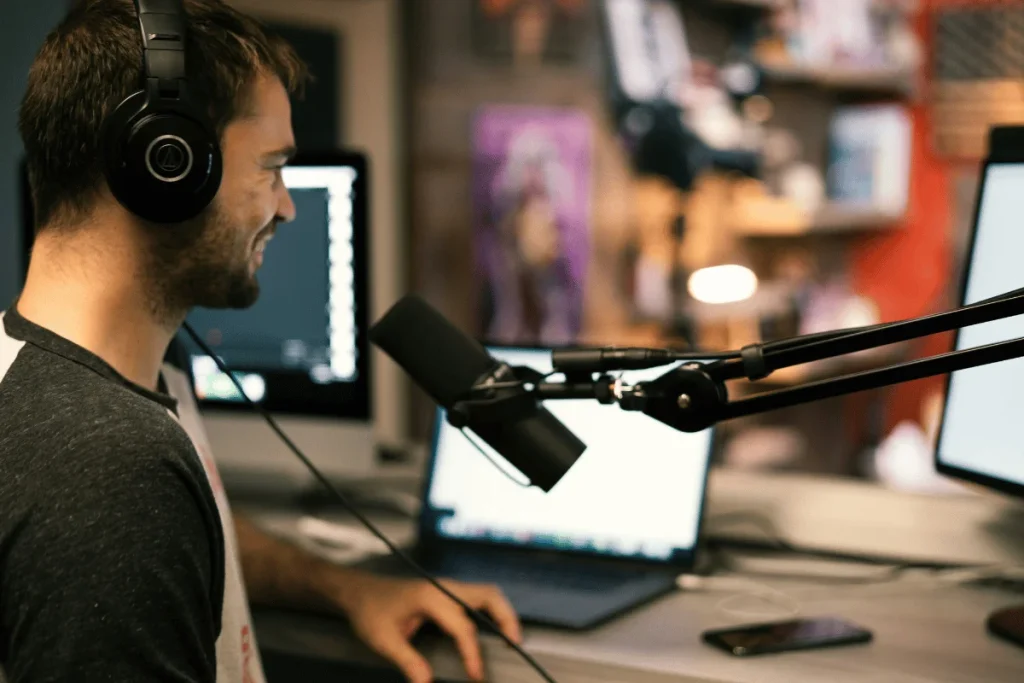
Frequently Asked Questions (FAQs)
Here are some commonly asked questions about audio marketing that might interest you:
What Are the Most Popular Platforms for Audio Marketing?
As of 2024, the leading platforms for audio marketing are:
- Spotify: With 675 million monthly active users worldwide as of the fourth quarter of 2024, Spotify remains a dominant force in the streaming industry.
- YouTube: Emerging as a significant platform for podcasts, YouTube has become the most popular service for podcast consumption in the U.S. It has 31% of weekly podcast listeners.
- Apple Podcasts: A longstanding player in the podcast arena, Apple Podcasts had approximately 28.5 million podcast listeners in the U.S. as of 2022, with projections estimating growth to 29.2 million by 2025.
These platforms offer extensive reach and diverse advertising opportunities, making them ideal for audio marketing campaigns.
How Do You Monetize Podcasts Through Audio Marketing?
If you run a podcast, then you can monetize your content through several strategies, such as:
- Selling branded merchandise to loyal listeners.
- Offering exclusive episodes or content to subscribers for a fee.
- Encouraging direct support from listeners via platforms like PayPal.
- Partnering with brands to feature ads or sponsored segments within episodes.
- Promoting products or services and earning commissions on sales through unique affiliate links.
To implement any of these strategies, you first need a solid listener base. The higher your engagement rates, the more appealing your podcast will be to potential sponsors.
What Is the Ideal Frequency of Releasing Audio Content?
The ideal release frequency depends on content type, production capacity, and audience expectations. Generally, people post:
- Weekly: Many podcasters release episodes weekly, balancing audience engagement with manageable production demands.
- Bi-weekly or Monthly: This frequency is suitable for in-depth or highly produced content, allowing more time for research and production.
How Long Should Branded Audio Content Be?
The ideal length would vary depending on your content type and what your audience wants. Short-form ads typically last 10-15 seconds, which is effective for quick messages and brand awareness.
Long-form ads range from 30 to 60 seconds as they hold detailed information and drive listeners to action.
Conclusion
Audio marketing is a powerful medium for reaching a wider audience. It also helps build trust, foster engagement, and enhance recall. Whether through podcasts, voice-activated ads, or immersive storytelling, brands can establish meaningful connections with their audience.
While you might face challenges like measuring ROI and standing out in a competitive space, strategic execution and staying ahead of emerging technologies can turn audio into a transformative journey for your marketing efforts.
If you also want your brand voice to resonate with your audience, turn your existing content into impactful podcasts. This will help keep your content alive for a longer period.
Get started with Hello Audio now and turn listeners into loyal customers.

